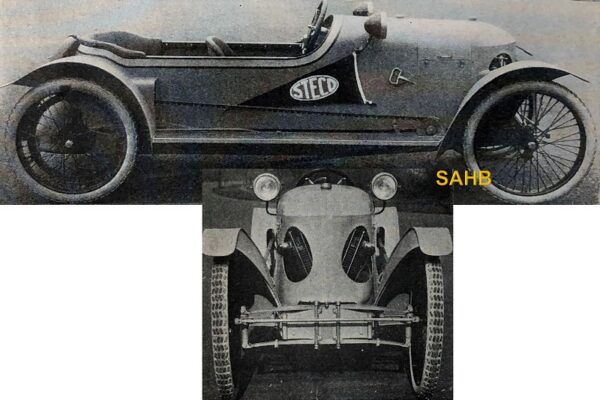
The USA is perhaps rarely associated with cyclecar manufacture, but there were many built there in the heyday of such cars before World War I. It is unsurprising that this example, the Steco, enjoys only three lines in Georgano, but it garnered a full two pages in a contemporary issue of the American Automobile Trade Journal.
So what was all the fuss about? Possibly not much, but someone convinced this illustrious magazine to spend some time extolling the car’s virtues. We discover that the Steco was manufactured by The Stephens Co., a firm of engineers located at 7329 Bond Boulevard, Chicago, Ill. It was powered by a 9hp two-cylinder air-cooled V-twin engine, and had two seats in tandem. The slogan used to promote it was a rather clever pun: “The Little Colossus of Roads”.
The magazine article gave considerable detail, but sadly no clear explanation of the supposed patented method of construction. Instead, it was said to be a vehicle of “distinctive individuality”, with an ash frame to which was solidly attached the formed steel body, thus making a box girder of great strength. This was supported at three points: by equalising transverse spring suspension at the front and two Lanchester-type cantilever springs at the rear. The side view we see here shows a long v-belt drive from the engine to the rear axle, and a top view confirmed that this belt was duplicated on the other side of the car. It is to be hoped that prospective customers were warned not to dangle their arms out of the side of the passenger compartment. Transmission was by friction, giving four forward speeds (possibly the system used by GWK in Britain and Lambert in the USA, with a transverse friction wheel moving across a large driving disc attached to the rear axle).
Despite the positive tone of the magazine article, it is thought that only a few cars were made in 1913 or 1914, and that production did not go ahead, probably because the era of the cyclecar in America was drawing to a close.
Image courtesy of The Richard Roberts Archive: www.richardrobertsarchive.org.uk







Leave a Comment